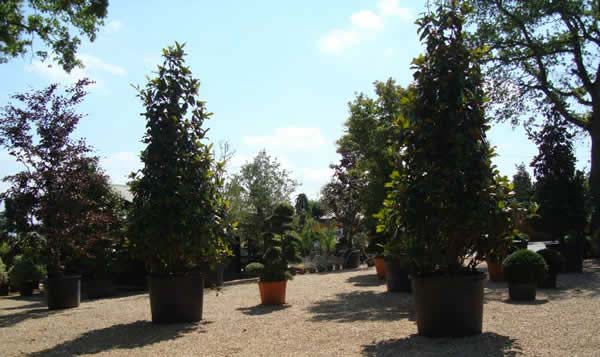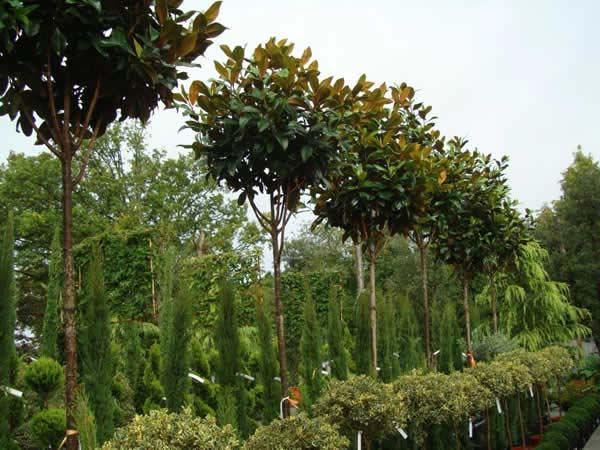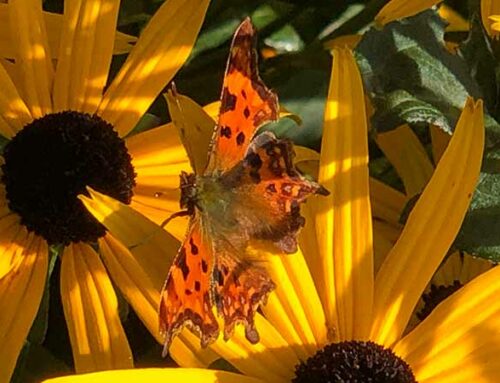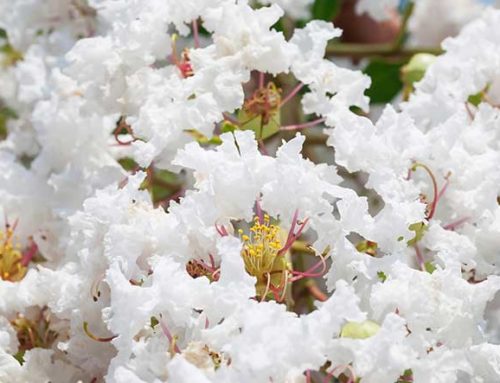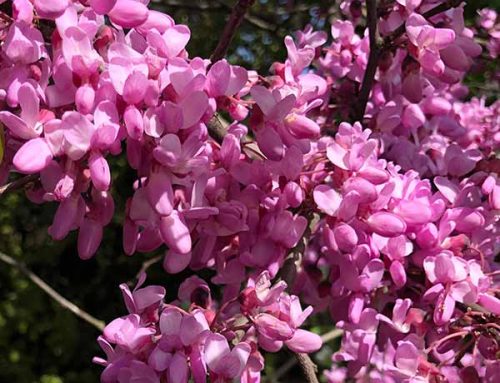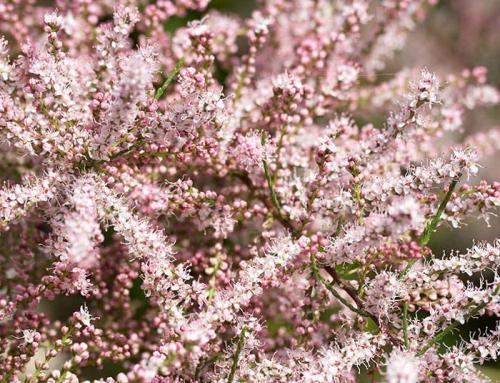Magnolia Grandiflora
This magnificent evergreen magnolia tree is called grandiflora due to its massive showy flowers and large, shiny, dark green, leathery leaves (the undersides of which are an unusual copper colour).
It is different from most other magnolias in that it keeps its leaves throughout the year and flowers late Summer rather than Spring. Also, although it loses a few leaves in spring/summer when new foliage appears, it does not have the massive leaf shed that many magnolias are known for.
Magnolia Grandiflora does grow to heights over 6m but it is very slow growing and takes decades – over 100 years – to reach over 8m height from a young tree. It is a very useful tree for front gardens as it does not grow quickly and can easily be pruned to shape. It grows naturally in a cone shape and requires minimal pruning or maintenance and prefers to be planted in fairly sheltered rather than windy exposed areas.
Gorgeous showy flowers appear in mid-summer (rather than other magnolias which generally flower in spring). The magnolia grandiflora flower is creamy white, saucer sized and has a wonderful citrus fragrance. It grows best in sheltered warm positions – sunny or partial shade will be good provided not exposed to cold drying winds.
Native to and symbolic of South-Eastern America the Magnolia Grandiflora is amongst the oldest trees on the grounds of The White House, USA planted by Andrew Jackson. John Bartram and Mark Catesby were both plant collectors who travelled around North America and introduced the Magnolia Grandiflora to British gardens in the 18th & 19th Century. Many trees planted at this time were planted by John Veitch, gardener to aristocracy, against the walls of many grand houses.
These American links have been continued by Stephen Crisp, head gardener at Winfield House the American Ambassador’s Official Residence. Crisp has planted a row of Magnolia Grandiflora along the front wall of the imposing red brick house to soften and add grand theatricality.
The Magnolia Grandiflora is naturally conical shaped but is now grown also as a full standard tree (with a clear stem) and can be planted as a screening or ornamental tree.

